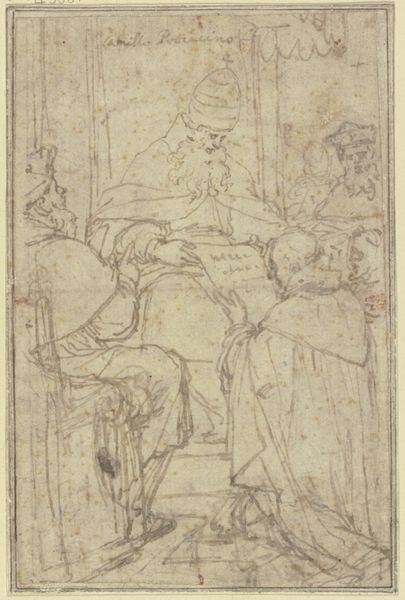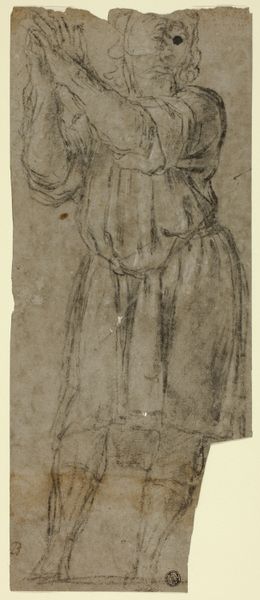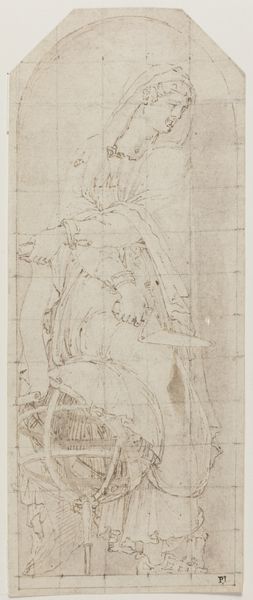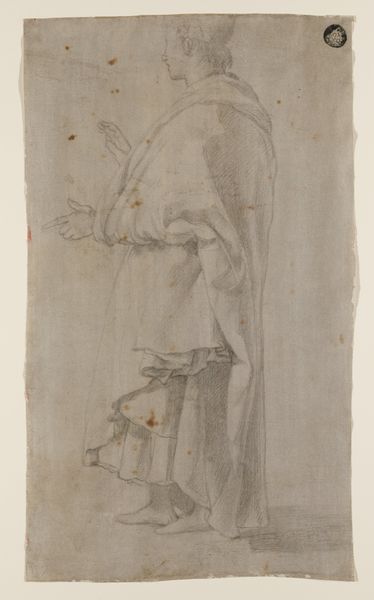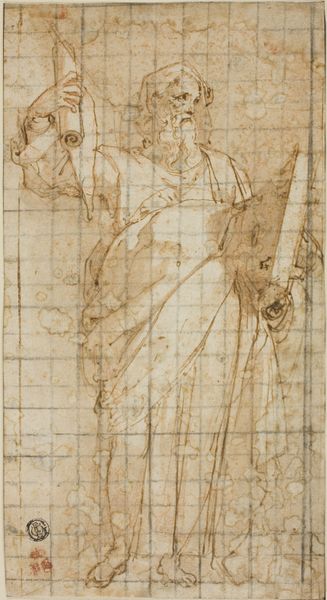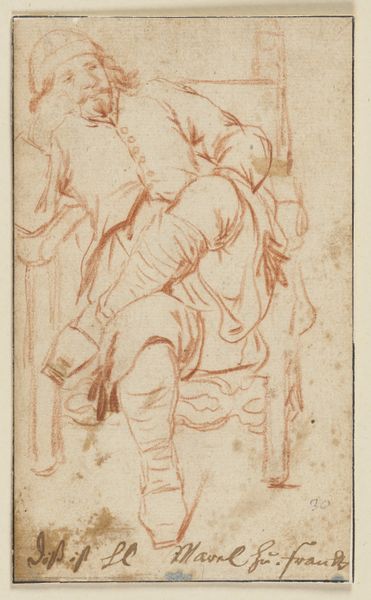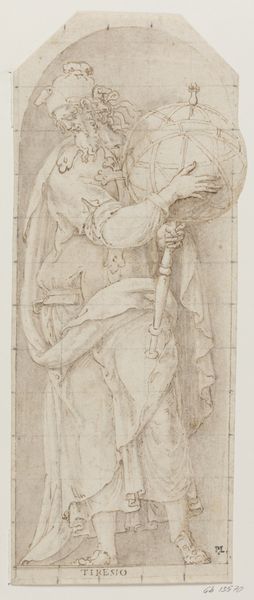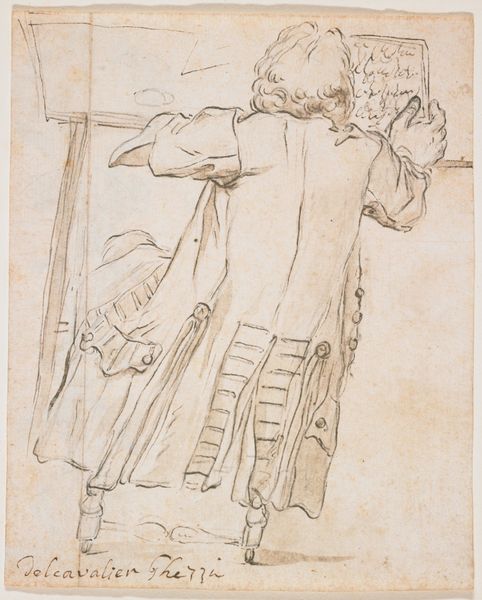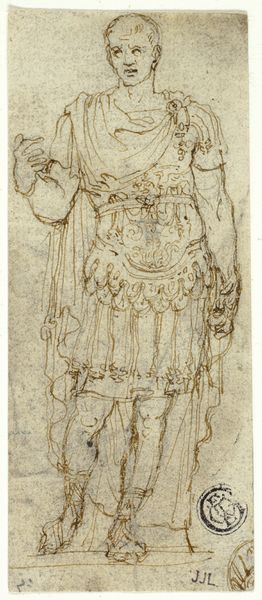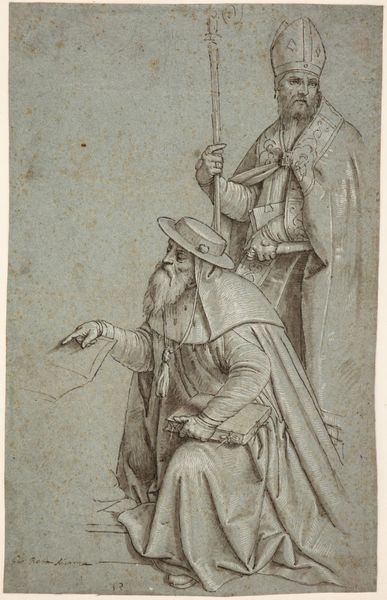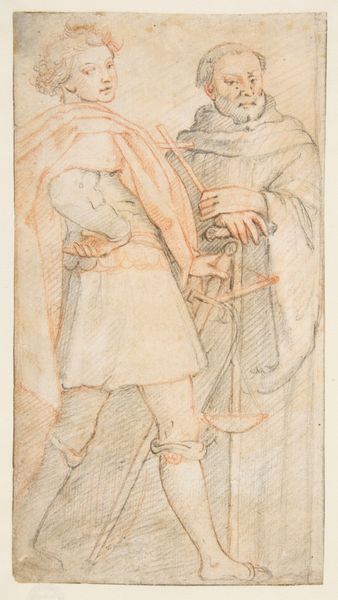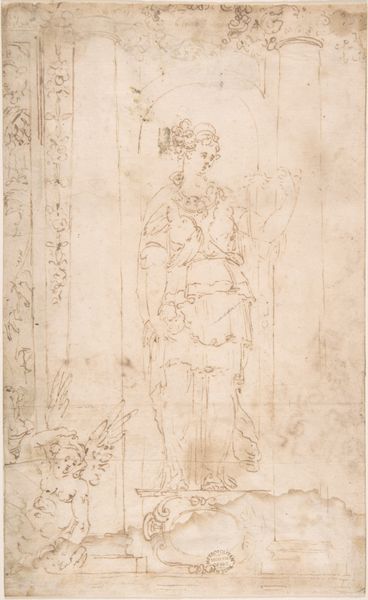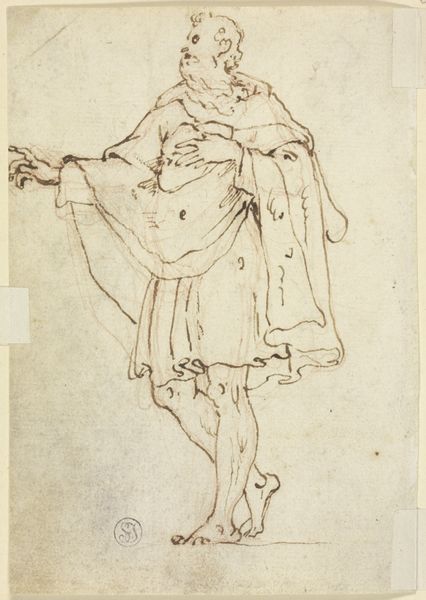
drawing, print, paper, ink, pencil, chalk, black-chalk
#
portrait
#
drawing
#
allegory
# print
#
pencil sketch
#
mannerism
#
figuration
#
paper
#
ink
#
pencil
#
chalk
#
water
#
black-chalk
Dimensions: 161 × 114 mm
Copyright: Public Domain
Editor: Here we have Lazzaro Tavarone's "Study for Juno (or Diana) with a Peacock", dating from around 1584-1585. It's an ink, black chalk, and pencil drawing on paper. I’m immediately struck by the gridded lines throughout, it feels very preliminary, almost like we're seeing the artist's process. What do you see in this piece? Curator: That’s a keen observation about the grid. Consider it a reflection of Mannerist sensibilities and a conscious choice to break with High Renaissance ideals of naturalism. The grid points to a deliberate construction of the figure, not simply a mimetic representation of reality, but one invested with complex meanings. Juno, or perhaps Diana, accompanied by the peacock - symbols of power, opulence, and, perhaps, female autonomy at the time, albeit through a patriarchal lens. Editor: Autonomy through a patriarchal lens? That’s interesting. Curator: Exactly. While classical allegories often grant women symbolic authority, these representations are almost invariably created and consumed within a patriarchal framework. The artist, and the intended audience, likely saw in Juno or Diana an idealized vision of femininity, power filtered through established social structures. We might even question if Tavarone is exploring the tension between female power and its containment within socially acceptable roles. The choice of medium – a sketch, a preparatory study – further complicates this, hinting at an unfinished or evolving understanding of these ideas. Editor: So, it's not just about classical mythology but also about the constraints placed on women in the artist's contemporary society? Curator: Precisely. Consider the peacock, typically associated with vanity and luxury. Does it reinforce stereotypical views of femininity, or is Tavarone subtly challenging those assumptions by associating it with a powerful goddess? What is interesting to consider, in this image, is where the agency of the subject truly resides. Editor: I see it differently now! Looking at this artwork I appreciate how much more there is than just its appearance. Curator: Absolutely, art provides insights on a multitude of overlapping historical and societal norms, and power structures.
Comments
No comments
Be the first to comment and join the conversation on the ultimate creative platform.
